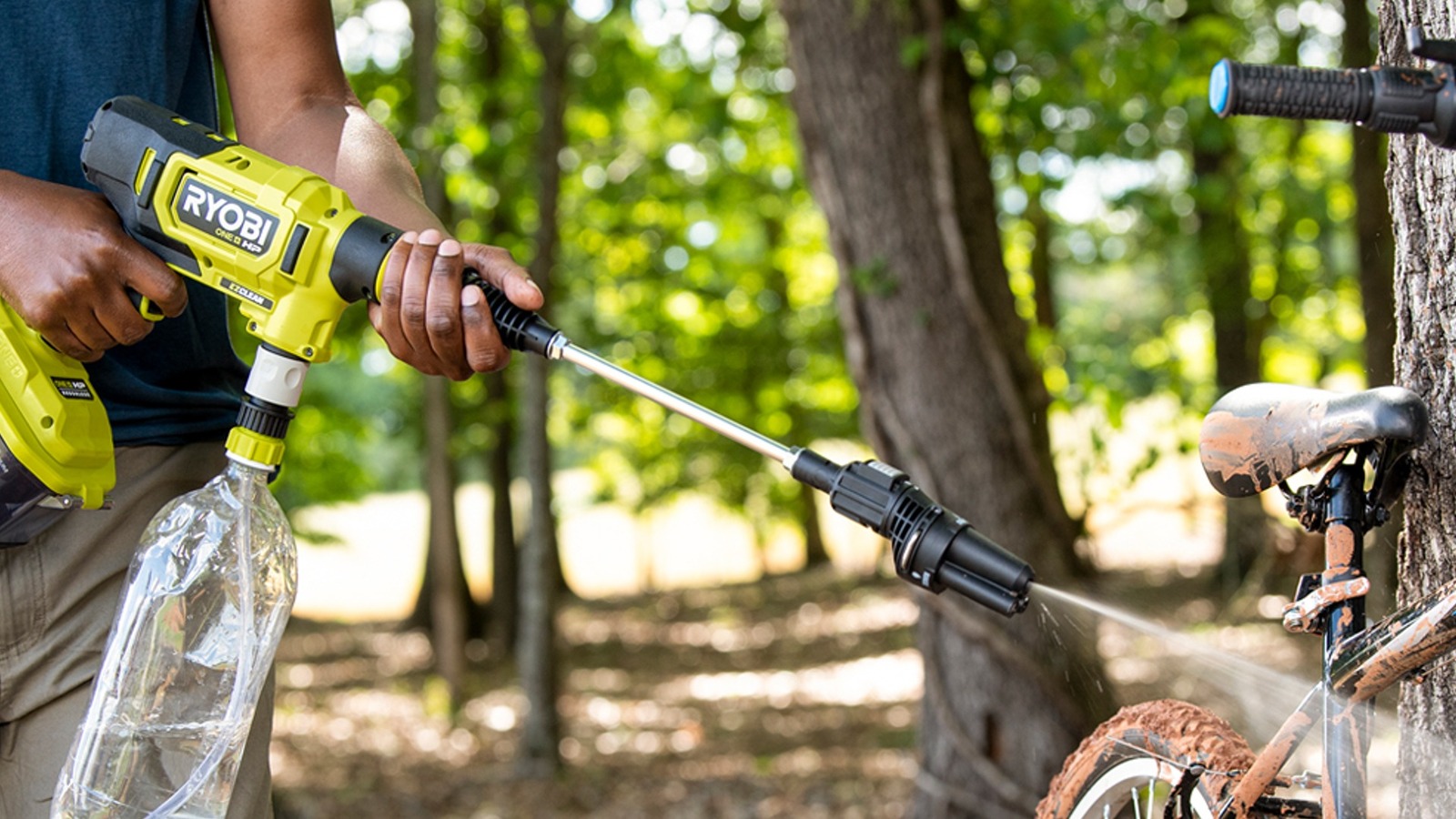
Before you assume something is wrong with the pressure washer itself, you should first take some time to diagnose its external elements. Unless you’re using a model with a self-contained water tank, you’d have to draw water from a connected garden hose. Check the length of the hose for any kinks, blockages, or obvious obstructions and smooth it out. If you’re drawing from a non-main water source, make sure there’s enough pressure to reach a really good PSI level for the washer. If you’re just sucking water out of a shallow bucket, there may not be enough pressure on the other end to actually draw water into the washer.
If the model you’re using does have a tank, open it up and inspect the water inside. If the water is dirty, there may be debris clogging things up. Empty out the water bucket and then refill it with clean water.
While the handheld pressure washers from Ryobi are powered by the brand’s ONE+ and 40V battery packs, the heftier ones may use a regular power cord. If you’re using a corded power washer, make sure you’re not using any more than one extension cord. Too many extension cords at once is dangerous and could dilute the flow of electricity to power the washer. You should also make sure the cord you’re using is made for the outdoors, and Ryobi says it should ideally be no more than about 80 feet long.

